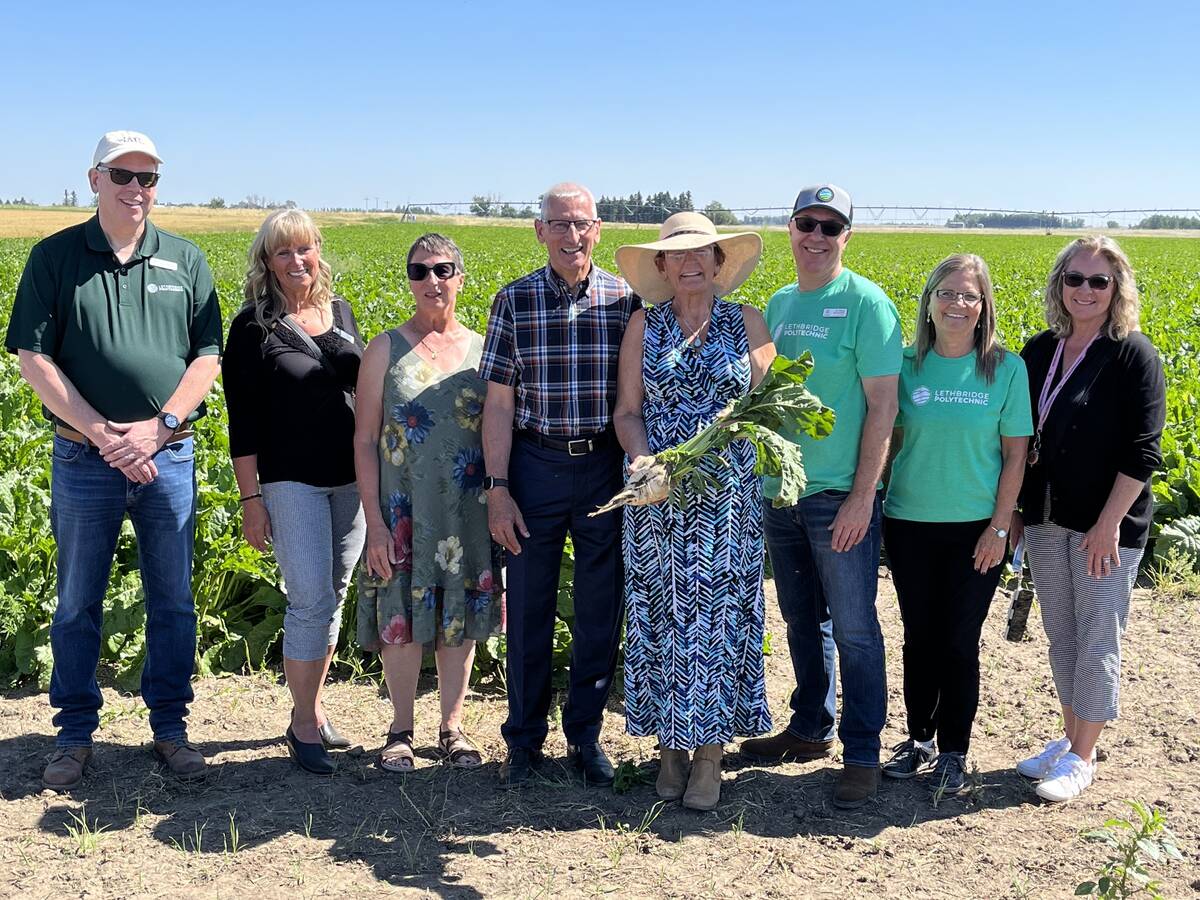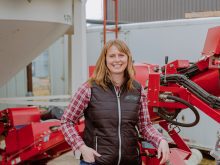Feeding is an important part of rotor combines.
The feeder house throat has to be narrow enough so that the ends of the slats don’t catch the crop. It will carry it all the way around and build up until the feeder chain plugs. The stripper bar should extend right to this edge. Fairing extensions are needed to accomplish this process.
Make sure the auger touches the stripper all the way around. The earlier augers were black so they bowed a lot if the combine was parked facing the sun.
Read Also

Lethbridge Polytechnic receives major donation
Multimillion-dollar donation by Hranac family aids Lethbridge Polytechnic’s research in integrated food production systems, irrigation science and post-harvest technology in Alberta
The auger will sometimes carry the crop all the way around and throw it onto the reel or the pickup. If you have this problem, add a second stripper on the bottom of the header so the auger will run on both strippers.
Check the flighting. The forming tool will leave a knurled finish like a ratchet handle in the middle of the flighting’s surface. It will grab the crop and carry it around.
The combines came with two augers: a slow one and fast one. The fast one has less pitches per length while the slow one works better in our conditions. The fast ones weren’t supposed to be sold in Western Canada, but you never know.
You can also improve the combine’s feeding characteristics by changing the timing of the fingers. Experiment with the adjustment at the right end.
When setting the feeder chain, remember that the top one turns faster than the bottom one. If the unit has a stone trap, make sure it doesn’t open too quickly. The trap dumps material into the choke for the fan every time it opens, upsetting the air in the cleaning area.
A piece of metal on the bottom left corner of the concave guides the material coming off the feeder chain and onto the concave. It has a habit of coming loose, so make sure when you work in this area that you tighten the bolts correctly.
The concave is set from the back and pivots in the front. Another section pivots in the middle and is adjusted from the front to ensure a positive setting that is progressively tighter as the crop goes over the concave.
Setting it so that the front is tighter than the middle will put a lot of unthreshed material in the grain tank.
Grain makes many passes over the concave and the rest of the cage during threshing. Rails around the cage as well as rub bars spiral the straw out of the combine.
Operators who find grain on the ground behind the straw spreader could add more reverse bars to back up the material in the cage. However, this also slows capacity.
Separation begins when the chaff and grain fall through the cage and the straw carries on. The cylinder is normally run as fast as possible without cracking, but some adjustments can be made.
Sometimes the straw is chopped too much and it all goes through the cage, overloading the trough underneath the cage and plugging the cage sweep in the older models.
If this happens, the operator can either slow down the cylinder or cut about six inches off each cage sweep.
The later models did not have a cage sweep, relying instead on the contour of the openings. Operators who have trouble building up material between the cage and the underside of the hopper should try changing the speed of the cylinder-rotor.
Accelerator rolls are probably the most important item on the combine.
If they are working properly, they take material out from the trough underneath the cage and drives it down past a blast of air. This makes sure that most of the chaff is gone before the material hits the shoe, making less work for it.
The trough on top will plug if the accelerator rolls are worn or damaged. The cage sweep will also plug, which reduces separation area, and the combine starts losing grain out the chute where only straw should exit.
Also, worn accelerators don’t throw the grain and chaff mixture fast enough past the blast of air below the accelerator rolls. When this mixture slows down, the air is too strong and blows grain out.
Producers then respond by slowing down the air, but this causes losses over the shoe. You just can’t win when the accelerator rolls are worn, especially in canola.
Some of the combines had the upper lip pointed down so that the material from the accelerator was blown back on the shoe.
You can see what is happening by the wear on the inside of the machine where it flows out of the air channels. It looks like a poplar leaf and should point straight back rather than down.
What upsets the shoe are the two cut-off points in the fan housing. They should be absolutely straight and parallel to the fan over its full length. The one at the chock should be bowed up slightly because it sucks down a little during operation.
The Saskatchewan livestock industry recently honoured nine producers and industry builders for their contributions.
The 2010 recipients of Saskatchewan Livestock Association honour scrolls were:
Murray McGillivray of Radville was the first recipient of a new honour, the Saskatchewan Beef Industry Hall of Fame Award. Introduced by the Saskatchewan Cattle Feeders Association (SCFA) and Pound-Maker Agventures, it recognizes an individual who has dedicated his life to promoting the industry.
As well, the industry has launched the Brad Wildeman Youth Mentorship Foundation.
Wildeman, who is president of the Canadian Cattlemen’s Association, accepted a cheque for $3,000 from the SCFA, Saskatchewan Stock Growers Association and Pound-Maker on behalf of the new foundation, which will provide young leaders with opportunities to learn and practice agricultural leadership.
The board of the Saskatchewan Cattlemen’s Association has elected Grenfell producer Jack Hextall to chair the organization.
Meeting for the first time since they were elected last fall, board members elected Ryan Thompson from Ceylon as vice-chair, Bill Jameson from Moose Jaw as finance chair and Brad Welter of Viscount as director at large. Bob Ivey from Ituna remains past-chair.
Eleven board members were elected. The two appointees from Saskatchewan Stock Growers Association are Doug Gillespie from Neville and Ryan Beierbach from Whitewood. The Saskatchewan Cattle Feeders Association appointed Richard Wilson from Porcupine Plain and Welter.
The Saskatchewan government plans to lengthen the term of office for school board and urban and northern municipal officials, but not those serving rural municipalities.
Municipal affairs minister Jeremy Harrison told delegates at the recent Saskatchewan Urban Municipalities Association meeting that the terms would change from three to four years beginning in 2012. Legislation to amend the act will be introduced later this year.
The move comes after SUMA passed a resolution at last year’s convention to make the change. The government then consulted with school boards because those elections are held in conjunction with municipal elections.
The Saskatchewan Association of Rural Municipalities has said it wants to stay with its two-year terms, citing greater accountability by going to the electorate more often. Most provinces have four-year terms except British Columbia, Alberta and the Yukon territory, which have three-year terms.

















